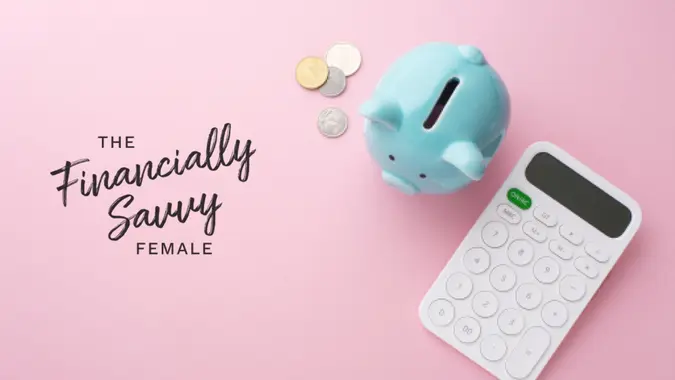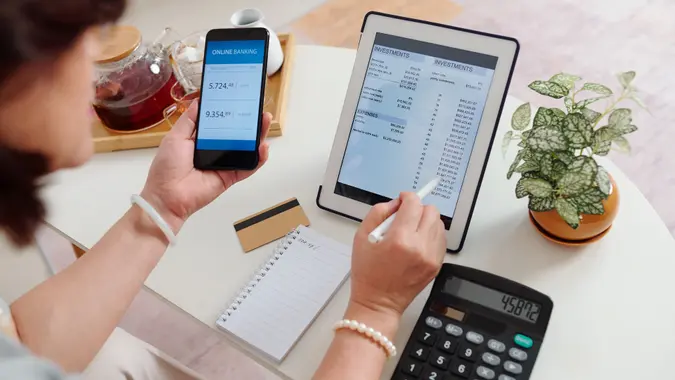5 Biggest Money Emergencies That Drain Your Savings Account

Commitment to Our Readers
GOBankingRates' editorial team is committed to bringing you unbiased reviews and information. We use data-driven methodologies to evaluate financial products and services - our reviews and ratings are not influenced by advertisers. You can read more about our editorial guidelines and our products and services review methodology.

20 Years
Helping You Live Richer

Reviewed
by Experts

Trusted by
Millions of Readers
Unexpected expenses can sneak up on you when you least expect them, depleting your wallet and savings account. Making sure you have a sufficient emergency fund can help you withstand the financial blow.
Here are some of the biggest money emergencies that can quickly drain your savings — and steps to take to ensure you’re prepared for the next time something happens.
Medical Emergency
Nobody wants to end up in the emergency room, but occasionally things happen. Roughly 100 million Americans have medical debt, and 12% owe $10,000 or more, according to a 2022 report from the Kaiser Family Foundation. With those numbers, it’s not a big surprise that medical expenses tend to be one of the largest debts for most Americans.
The risk of medical debt affects two different groups of people. The first is the 30 million people who don’t have health insurance. If they suffer a medical emergency, the financial implications could be catastrophic.
Next is anyone who is underinsured. This would be someone with a very high deductible health plan without a health savings account (HSA) to complement it. Depending on the out-of-pocket maximum, a medical emergency could mean tens of thousands of dollars worth of medical bills.
Job Loss
Job losses can happen to anyone, even when the economy is in good shape. If you lose your job, your emergency fund can help support you until you find a new job. However, depending on the length of your layoff, you could see your savings dwindle pretty fast. Having additional sources of income can help ease the burden.
Home Maintenance
Owning a home can be a great financial achievement. It can also be a financial nightmare.
“Home maintenance can be the dark side of home ownership,” said Nick Burgess, founder of Making a Millennial Millionaire. “When you rent, it’s on your landlord to pay for the repairs to your home. When you own the home, it’s on you.”
Burgess said that their air conditioning went out overnight a couple of years ago, and they woke up to a house over 90 degrees. After calling a technician who told them they needed a full unit replacement, they were stuck with an $8,000 bill.
Pet Emergencies
Most people don’t consider their animals to be a big financial risk. However, similar to humans, things can happen that require emergency treatment. Depending on the issue, this could mean hundreds or even thousands of dollars.
Luckily, pet insurance can be a great way to limit financial responsibility if the injury or sickness is severe.
Car Repairs
Car repairs can be a big drain on the savings account. For example, assume your tires are running low on thread. Depending on your car type, a new set of tires could set you back $1,000 or more. Now think about the financial effect of something more serious happening to your car’s transmission or electrical system. This could be thousands of dollars that you’ll be required to pay for out of pocket.
“If you’re dealing with an emergency car repair, you can still do your due diligence of comparison shopping among local shops and service providers to get the best deal,” said Stefanie O’Connell Rodriguez, personal finance expert and influencer. “Using a service like Kelley Blue Book Service Advisor that identifies top local auto repair shops and finds the fairest prices… is an example of an easy way to save money, even when you’re in the pinch of a financial emergency.”
How To Bounce Back After an Emergency
After you’ve dealt with an emergency that’s set you back financially, it can feel like a dark cloud is hanging over your head. You worked hard to build up your emergency fund, and now it’s been depleted.
So what do you do now? Where do you start? The answer is simple. You do the same thing you did the last time you built your emergency fund.
Assess Your Current Situation
Before you do anything else, you need to assess your financial situation. Most experts think you should have an amount to cover at least three to six months’ of expenses in an emergency fund. After your latest emergency, what do you have left? Calculate how much money you need to save to get your account back to where it was previously.
Look at and Redo Your Budget
Now that you know how much you need to save, it’s time to devise a plan. Pull up your budget and re-familiarize yourself with it. Do you also have a monthly line item for your emergency fund, or must it be added?
By looking at your monthly expenses, you’ll get a good idea of how much you can save each month. If possible, cut back on a discretionary item to boost your emergency fund quicker.
Stick to Your Plan
Once you have your plan in place, you must stick to it. Make things automatic by setting up an automatic monthly withdrawal from your checking account to your emergency fund. You won’t be tempted to take a month off from the plan, if you put things on autopilot.
The Bottom Line
Emergencies happen whether you like it or not. The hope is that you’re prepared and the financial shock isn’t too painful. If you find yourself in a position where you need to build your emergency fund back up again, remember that it all starts with a plan that you can stick to. You’ve done this before, and you can do it again.
 Written by
Written by  Edited by
Edited by 

























